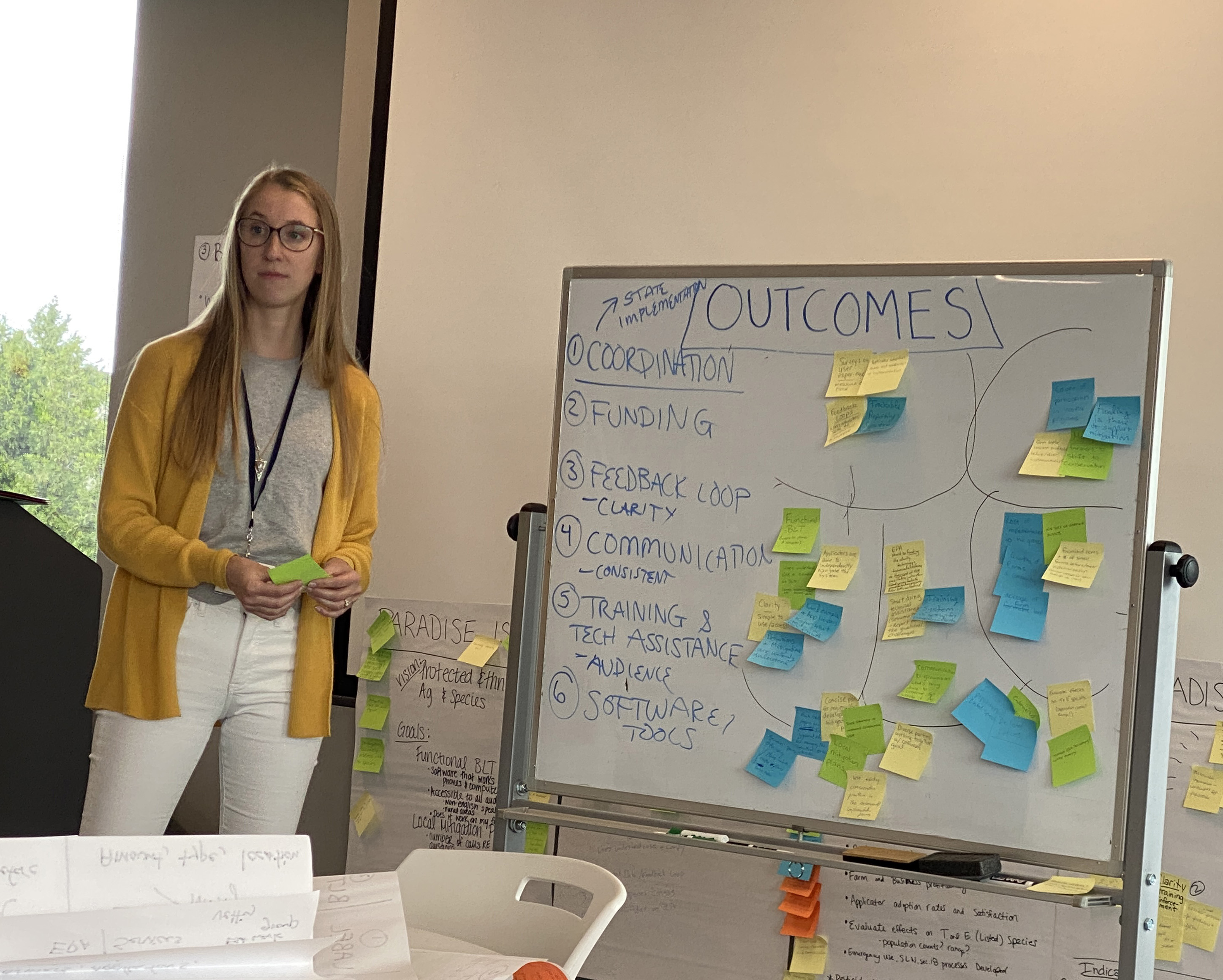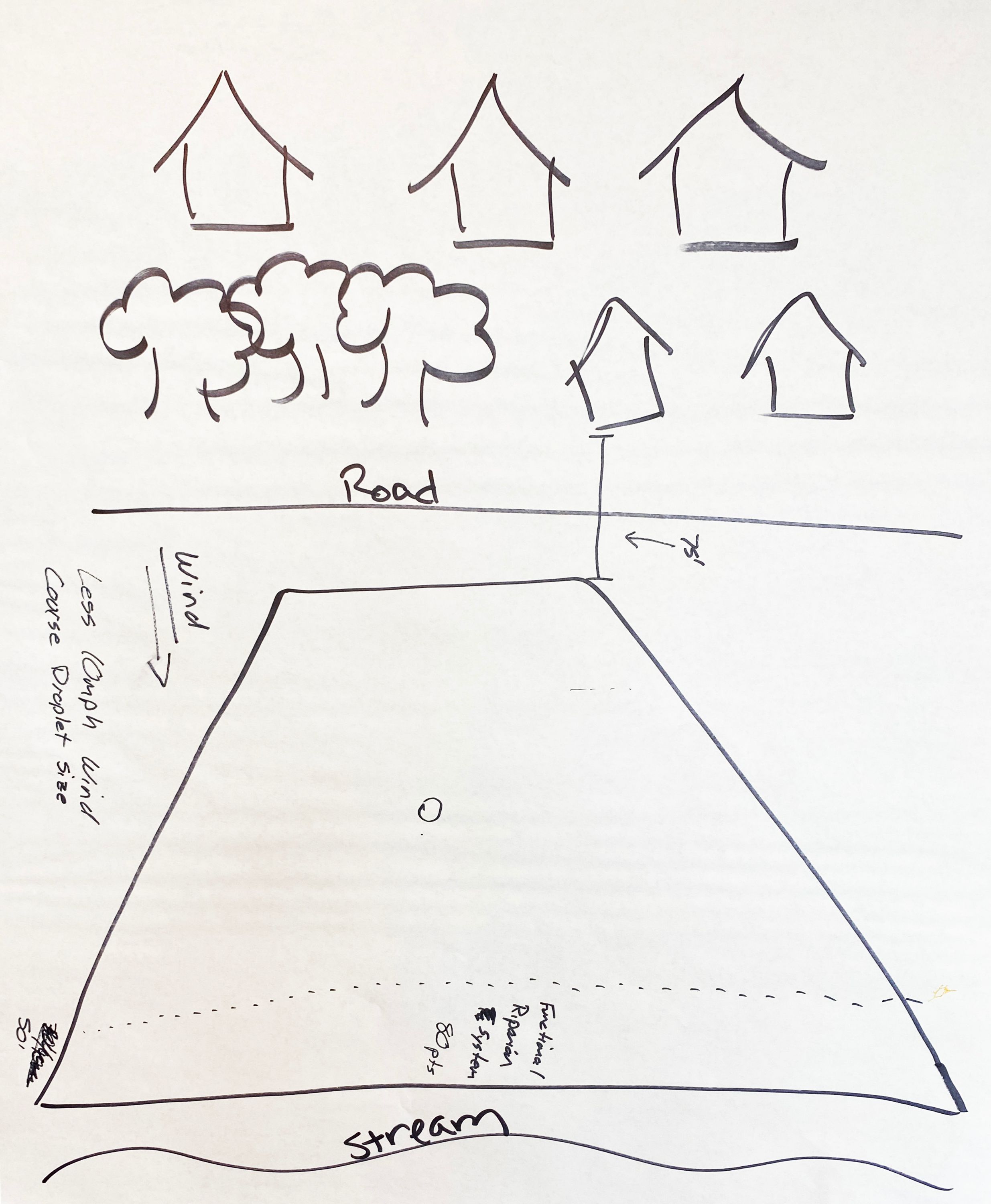Work Group Aims to Make New Endangered Species Rules Workable

By Steve Elliott
Western IPM Center
“If it’s so complex that it’s impossible, then no one wins.”
That was the key takeaway from a recent two-day workshop in Vancouver, Washington about implementing new U.S. Environmental Protection Agency pesticide-use rules to protect endangered and threatened species.
However well intentioned the aim of the program – and the welcome inclusion of multiple, flexible ways to mitigate the use of certain pesticides in sensitive areas – if the result is so complicated that pest managers can’t understand it, university trainers can’t teach it and state regulators can’t enforce it, then the program fails.
But the 40 or so people who came to the workshop didn’t want to see the effort fail. Protecting America’s most vulnerable wildlife and its vital agricultural production simultaneously may be challenging, but it’s not impossible.
So representatives from many involved groups gathered to seek ways to make the effort work in Oregon and Washington. Participants included representatives from grower groups and pesticide manufacturers, EPA’s Region 10, U.S. Fish and Wildlife Service and the National Marine Fisheries Service, the state universities of Oregon and Washington and those states’ departments of agriculture, conservation districts and agencies including the Natural Resources Conservation Service and third-party certification program Salmon Safe, as well as urban pest control companies.
“That’s been the most gratifying part of these workshops,” said Dani Lightle, an assistant professor of practice at Oregon State University who organized the May workshop in Vancouver and four others that proceeded it. “People are working together to make this succeed. Producers who came to the earlier workshops asked when a next one will happen. We’re seeing engagement from a lot of groups and breaking down some of the barriers between them.”
Lightle received a 2024 Western IPM Center work group grant to organize the workshops in Oregon and Washington to help develop an effective way to implement the new pesticide-use rules in those states.
“Oregon and Washington produce more than 200 specialty crops, have a variety of growing regions and agricultural systems and a large number of endangered species,” she explained. “Implementing endangered species protections here is going to be a different challenge than in an area dominated by one or two agronomic crops.”
Understanding the EPA’s Endangered Species Effort
As simply as possible, here’s what brought us to this point:
Lawsuits contended – and courts agreed – that when the U.S. EPA approved or reapproved several pesticides, it didn’t consider their impact on endangered and threatened species as required by the federal Endangered Species Act.
To comply, the EPA, working with the U.S. Fish and Wildlife Service and the National Marine Fisheries Service, established a number of “Pesticide Use Limitation Areas” in endangered species’ known or needed habitat and imposed additional pesticide-use restrictions for certain pesticides in those areas.
The pesticides subject to additional restrictions have had their labels changed directing anyone using them to go to an EPA website called Bulletins Live Two before applying the pesticide. On the website, users enter the location where they plan to make the application. If the location is within a Pesticide Use Limitation Area, the website lists additional restrictions the applicator must follow during the application. These additional restrictions are designed to protect the endangered and threatened species that can be harmed by those pesticides.
To make complying with the restrictions more feasible, EPA bulletins list a number of possible mitigations pesticide applicators can adopt – primarily to reduce the risk of runoff and drift – and there is a point system to quantify the risk to endangered species of applying a particular pesticide and the effectiveness of the various mitigations. If pesticide applicators can find and employ mitigations worth more points than the risk, they can apply the product. If there aren’t enough mitigations available in a particular situation, they cannot. (The points system may be replaced by something less complex as the EPA’s program develops. The boundaries of Pesticide Use Limitation Areas may also change.)
Pesticide applicators must check for new bulletins within six months of a planned application and must comply with all the other use instructions and restrictions on the main pesticide label in addition to any additional restrictions imposed by bulletins. These requirements apply to anyone using these pesticides in a limitation area – growers, land managers, home pest control companies or even homeowners.
Not Easy to Say and a Lot Harder to Do

To demonstrate how well – or not – the system works in practice, the Washington workshop kicked off with a small-group exercise. Each small table held a mix of regulators, growers, university extension educators, conservation agencies, pesticide manufacturers and applicators, and each was given a drawing of a typical Pacific Northwest farm that included fields, buildings, roads and a stream or pond. The groups were then tasked with determining how they would apply two insecticides, diazinon and cyantraniliprole, to that field.
The challenges with using the Bulletins Live system became immediately clear. The main pesticide labels directed users to different EPA web pages. Anyone using a smart phone to access the Bulletins Live website got an error popup that their browsers were out of date and incompatible. Zeroing in on the location where the hypothetical application was to be made was overly complicated, and the phone-based interface didn’t allow anyone to type in the product registration number that’s needed to pull up the bulletin. (Some smart soul figured out to enter the number in a notes application and paste it into the EPA site.) Eventually, each group got the necessary bulletins for the two insecticides.
Then it got hard.
Each group, with all their combined expertise in conservation and agricultural pesticide use, now tried to understand four dense lists of restrictions – the labels of each product, plus the bulletins for each product – and find relevant mitigation measures from a table of possible mitigations that was formatted in a less-than-ideal manner and drawing from text that used inconsistent language for mitigation measures.
One group had zero percent confidence they’d figured it out.
One group had 80 percent confidence they’d done it right, but then realized they’d overlooked the main label restrictions on the products and only considered the bulletins.
No group had any idea how they’d deal with a more real-world scenario of a tank mix of six or seven pesticides, or how anyone with limited English language or math skills would have any hope of working through the process.
Seeking Solutions
The point of the exercise – and the workshops themselves – wasn’t to cast stones at the EPA process. It was, as Lightle explained, “to develop a shared vision of success.”
And as the final workshop of the five in the Pacific Northwest, the Vancouver meeting did that, sifting through ideas and suggestions from the previous four to identify promising avenues to explore to make the system function.
One of those avenues was technological. As difficult as it was for people to work through all the permutations of multiple labels, they were essentially “if-then” scenarios: if the wind speed is this, then the size buffer is required is that. Programmed correctly, a digital tool could combine existing geospatial data with EPA pesticide labels and bulletins and let pesticide applicators see their different application and mitigation options when using certain products. A subcommittee was formed to investigate the technical and economic feasibility of such tools, with the goal of encouraging the EPA to make the required data available to third-party developers to bring easy-to-use applications to market.
A second avenue chosen for further work was making state departments of agriculture (or regional consortiums of them) the responsible agencies for defining mitigations.
“I think one thing that’s becoming clear is the difficulty – if not the impossibility – of writing meaningful mitigation measures at a national level when there’s so much variability across the country in geography, climate, species habitat and agricultural systems,” Lightle said. “Including an array of possible mitigations adds flexibility to address those regional differences, but as we’ve seen, it also adds so much complexity the process can become unworkable.”
Allowing for regionally developed mitigations could ensure the practices are both locally effective for protecting vulnerable species and practical for growers and other pesticide users in that region to adopt.
Lightle and her collaborators in Oregon and Washington plan to seek additional funding to continue those efforts in the years ahead, and to document the work they did this year so people in other states or regions can launch similar efforts.
“Before we started this, we didn’t have the people talking to each other who needed to be,” Lightle said. “We do now.”
Key cooperators in planning and delivering the workshops included Annie Krueger of Compliance Services International, Gary Bahr of the Washington State Department of Agriculture, Kathryn Rifenburg with the Oregon Department of Agriculture and Ryan DeWitt with the National Marine Fisheries Service.
The Western Integrated Pest Management Center funded this work through its annual grants program. The Western IPM Center works to solve pest problems in agriculture, natural settings and communities across the West by funding and promoting IPM development, adoption and evaluation. Our goal is to bring the right people together with the necessary resources to solve the West's important pest problems.